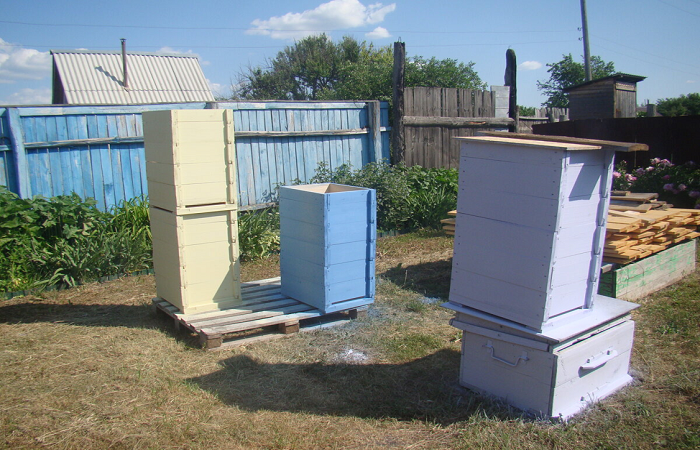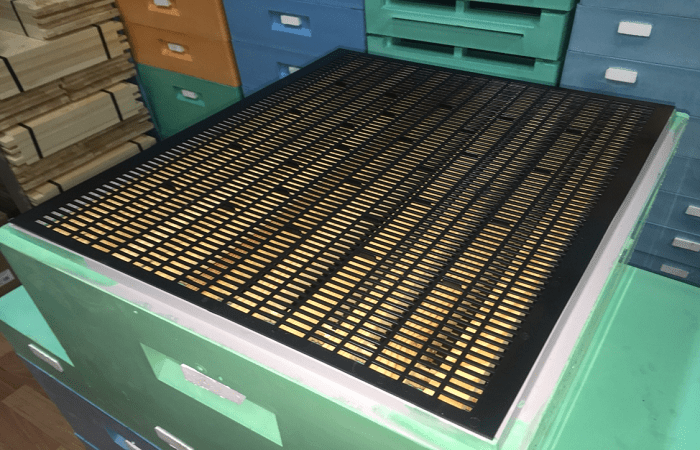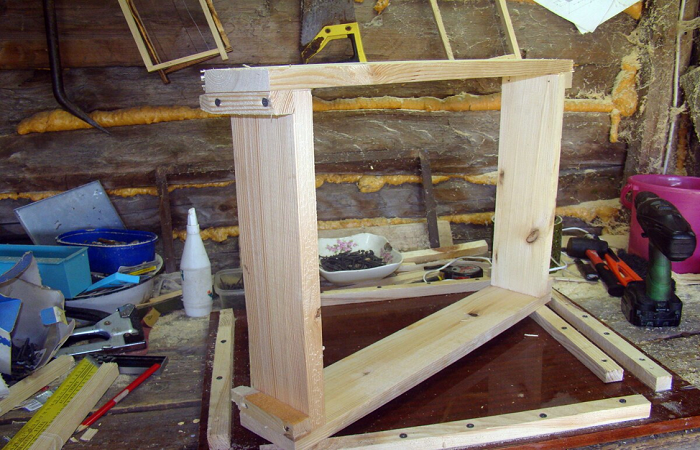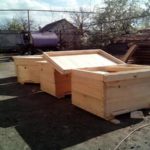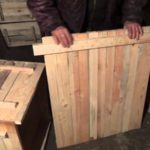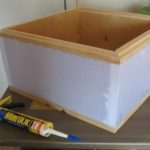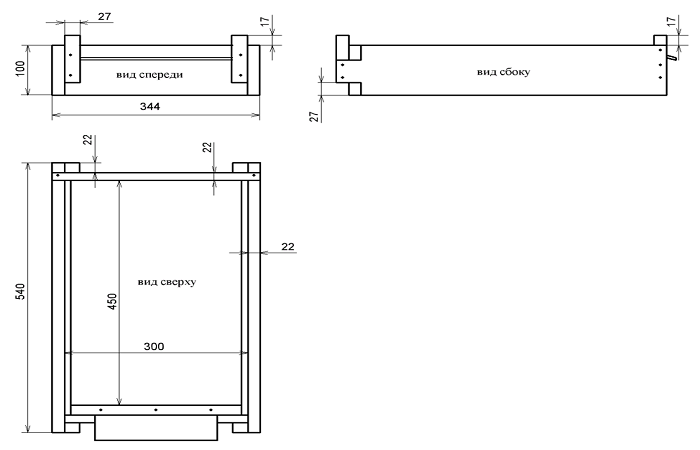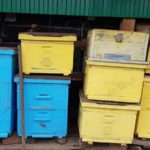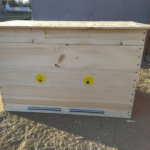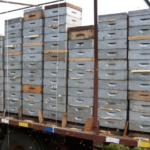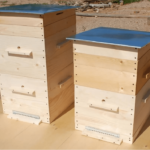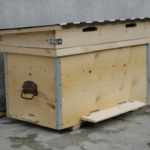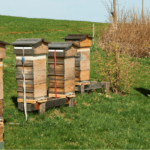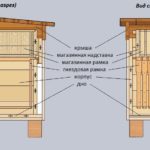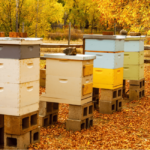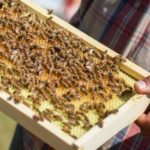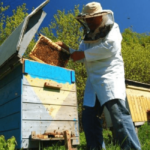Beekeeping is developing, new techniques for caring for insects and forms of building houses are appearing. Horned hives are considered a novelty in bee breeding. The inventor of the new design was Mikhail Palivoda. It is useful for beekeepers to become familiar with the features of this format of breeding families, the advantages and disadvantages. In addition, you can assemble such a hive yourself if you study the drawings and recommendations of the craftsmen.
Design Features
This option differs from the usual bee houses in the following ways:
- the weight of the structure is lower than usual - the weight of the beehive together with the collected honey is no more than 16 kg;
- the format of the frames for the home is standard - 14.5 cm, which allows you to purchase and use ordinary tools for the formation of layering and the growth of apiary farming;
- a mandatory structural element is Henemann gratings (they help preserve the brood during honey pumping);
- horned bee house - a multi-body version of the hive.
Attention! An interesting design solution by Mikhail Palivoda is the use of a small-caliber grille on the bottom wall of the house. This ensures sufficient ventilation of the hive during the period of active honey collection.
Advantages and disadvantages
Each design has positive and negative sides. Advantages of stag hives:
- light weight (the beekeeper can handle the home without additional help);
- easy to assemble at home using simple drawings (assembly is accessible even to novice beekeepers);
- 10 standard size frames can be installed in one house;
- For construction, you can use solid elements or remnants of wood from other works (debris, slats, etc.).
Attention! Horned bee houses are considered universal for novice beekeepers - lightweight, simple in design, you can assemble several elements into one object and gradually increase the number of insects in the apiary.
The pros and cons are best revealed after practical use - details in the video.
There are also disadvantages - bee houses are small, no more than 10 frames fit into one hive. For beekeepers who have been working with honey for several years and have a large apiary, this can be a serious obstacle.
Material requirements
The main element of the future bee house is wood. For horned hives, it is recommended to choose the following breeds:
- Linden;
- poplar;
- willow
The materials need to be dried. Additional impregnation is not allowed - it is harmful to insects. If you want to reduce the cost of production, you need to take lining. A metal grill with a maximum diameter of 3 mm is placed in the lower part.
Drawings and dimensions
Mikhail Palivoda developed drawings and prescribed certain dimensions for assembling stag hives at home.
Beekeepers need to consider the following parameters:
- the main element of the bee house is the body, the height of which in this case should be 15.3 cm;
- side parts - a width of 53.5 cm is considered suitable. Attention! It is important to consider additional protrusions for connecting parts. An indent of 1.6 cm is left to the walls, 4 cm is reserved for the indentations of the outer part, and 0.5 cm is added when installing the front and rear parts;
- boards installed at the front and rear should be 40 cm wide, and 0.8 cm should be laid on the folds;
- the lower part - the bottom - is calculated according to the width of the walls of the bee house for 10 frames (in addition, a repeated mesh bottom is installed to collect garbage);
- “horns” (hence the name) 15 cm long are attached to the external elements; at the top there should be a protrusion of 1.5 cm.
How to make a horned hive with your own hands at home
The advantage of stag hives is that such multi-hulled dwellings can be assembled independently, without having to spend money on expensive materials. Sequencing:
- determine the number of future houses and the required number of frames (8 or 10);
- prepare a workplace, necessary materials and tools;
- Mark dimensions on wooden blanks, cut out the required number of parts;
- assemble the parts in a convenient way (with a screwdriver or nails).
Attention! When cutting parts, it is important to leave gaps for assembly (indicated in the dimensions). Otherwise, the bee house will turn out smaller in size, and the selected frames will not fit in quantity or number.
The information is clearly presented in the following video.
Beginning beekeepers need to learn a lot of information, tips and instructions. Therefore, it is recommended to start with simple options. These include the purchase of horned hives for an apiary. Small, lightweight, you can assemble it yourself at home from scrap materials - ideal for any beekeeper.

